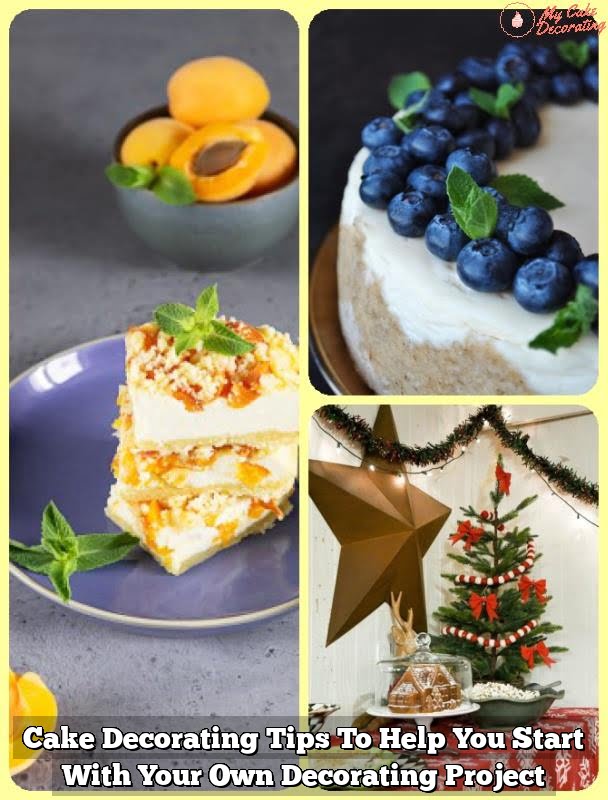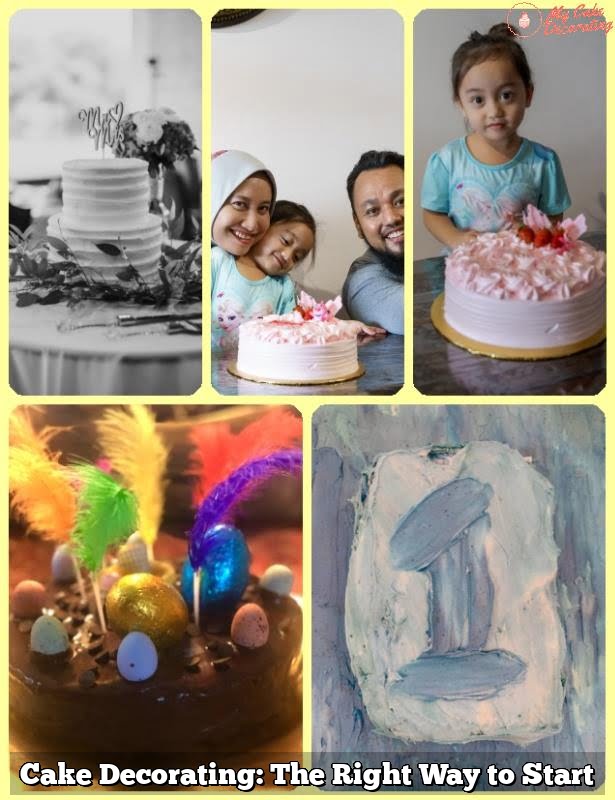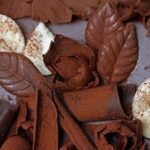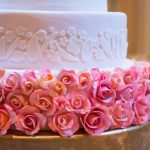Are you interested in learning how to start cake decorating? Whether it’s for personal enjoyment or to potentially turn it into a profitable venture, the art of cake decorating can be a rewarding and creative pursuit. From understanding frosting and piping techniques to finding inspiration for design ideas, this article will guide you through the basics of getting started in cake decorating.
Cake decorating is not just about making a delicious dessert, but also about creating a visually appealing masterpiece. In this introductory section, we will explore the necessary tools and equipment you’ll need to begin your cake decorating journey. Understanding the fundamentals of cake decorating is essential before diving into more advanced techniques and styles.
As you embark on your cake decorating journey, it’s important to develop a solid foundation of basic techniques such as working with frosting, piping, and fondant. These fundamental skills will serve as building blocks for more intricate designs and decorations as you progress in your craft.
Additionally, we will discuss where you can find inspiration for your designs and offer tips on honing your skills through practice. Whether you’re a novice or looking to elevate your current skills, this article will provide valuable insights to help you become a proficient cake decorator.
Getting Started
First and foremost, a set of quality mixing bowls, measuring cups and spoons, and an electric mixer are essential for preparing the cake batter and frosting. Additionally, a variety of cake pans in different shapes and sizes will allow you to create diverse designs. For decorating purposes, invest in an offset spatula for smoothing icing, a piping bag and tips for intricate designs, and a turntable for easy access to all sides of the cake.
Furthermore, fondant is a popular choice for creating smooth and flawless finishes on cakes. To work with fondant effectively, consider purchasing a fondant rolling pin, smoother tool, and various shaping tools such as cutters or embossers. Lastly, having a good quality cake stand or display board will allow you to showcase your creations professionally.
Now that you know which tools are essential to start your journey into cake decorating, take some time to research reputable suppliers in your area or online. Investing in high-quality equipment will make the process more enjoyable and ensure beautiful results. With these basic tools at your disposal, you’re ready to learn how to start cake decorating with confidence.
Basic Techniques
Types of Frosting
When it comes to cake decorating, it’s important to understand the different types of frosting and how they can be used to achieve various effects. Buttercream frosting is a popular choice due to its creamy texture and versatility. On the other hand, royal icing is known for its smooth, glossy finish and is commonly used for intricate piped designs. Additionally, ganache provides a rich and decadent option for chocolate lovers.
Piping Techniques
Piping is an essential skill in cake decorating and involves using a pastry bag and various tips to create decorative designs with frosting. Whether you’re looking to create intricate borders, delicate flowers, or personalized messages on cakes, mastering piping techniques is key. Practice different pressure levels and movements to achieve different shapes and patterns.
Working With Fondant
Fondant is a pliable icing that can be rolled out into thin sheets to cover cakes or shaped into 3D decorations. It provides a smooth and polished finish that can elevate the overall look of a cake. Understanding how to properly knead, roll, and drape fondant onto a cake is crucial for achieving professional-looking results. Additionally, learning how to sculpt fondant into various shapes will open up endless possibilities for creative cake designs.
Understanding these basic techniques of frosting, piping, and fondant lays a strong foundation for anyone looking to start cake decorating. Whether you’re a beginner or looking to refine your skills, mastering these fundamental aspects will set you on the right path towards creating beautiful and delicious works of art.
Finding Inspiration
When it comes to cake decorating, finding inspiration for design ideas is key to creating beautiful and unique cakes. Whether you’re a beginner or a seasoned decorator, looking for new and innovative ideas can help fuel your creativity and keep your designs fresh. So, where can you look for design inspiration?
One great way to find design ideas for cake decorating is by exploring different online platforms such as Pinterest, Instagram, and cake decorating blogs. These platforms are filled with countless photos and tutorials that can spark new ideas and techniques for your next cake creation. You can also join online communities and forums dedicated to cake decorating, where you can share ideas and tips with fellow decorators.
Another way to find inspiration is by studying the work of professional cake decorators. Attend cake decorating classes, workshops, or even watch videos of renowned decorators showcasing their skills. By observing their techniques and designs, you can gain valuable insight into how to elevate your own cake decorating abilities.
Experimenting with different mediums such as watercolor painting, fashion trends, or nature can also provide unique design ideas for your cakes. By drawing inspiration from various sources outside of traditional cake decorating, you can infuse your creations with originality and innovation.
By actively seeking out inspiration from these various sources, you can expand your creative horizons and take your cake decorating skills to the next level. Remember that finding inspiration is all about keeping an open mind and being willing to think outside the box when it comes to designing your cakes.
Practice Makes Perfect
As with any craft, practice is essential for honing your cake decorating skills. No one becomes a master overnight, and it takes time and dedication to perfect the art of cake decorating. Whether you are just starting or have been decorating cakes for some time, continuous practice is crucial for improving your techniques and developing your own style.
Perfecting Your Frosting
One of the fundamental skills in cake decorating is mastering the art of frosting. The way you apply frosting can drastically change the look and feel of a cake. From achieving smooth and even layers to creating intricate textures, there are various frosting techniques you can practice to enhance your skills.
Experimenting With Piping Techniques
Piping is another essential skill that every cake decorator should work on perfecting. Learning how to handle piping bags and nozzles to create different designs such as swirls, rosettes, and borders can take time, but with practice, you will become more confident in executing these techniques effectively.
Working With Fondant
Fondant can be a challenging medium to work with at first, but practicing the art of covering cakes smoothly and creating intricate fondant decorations will elevate your cake decorating skills. Experiment with different types of fondant, tools, and techniques to find what works best for you.
Remember that practice not only helps improve your technical abilities but also builds creativity and confidence. Set aside dedicated time for regular practice sessions so that you can actively work on refining your skills. With consistent effort, you will see significant progress in your cake decorating abilities over time.
The Business Side
Starting a cake decorating business can be a lucrative venture for those with a passion for baking and design. With the right strategies, you can turn your hobby into a profitable career. Here’s how to start cake decorating as a business:
First, you’ll need to obtain the necessary permits and licenses to legally operate your business. This may include a food handler’s permit, business license, and liability insurance. Check with your local government agencies to ensure that you are in compliance with all regulations.
Next, consider creating a business plan that outlines your goals, target market, pricing structure, and marketing strategies. A well-crafted business plan will serve as a roadmap for your venture and help attract potential investors or lenders if needed.
Another crucial step is to establish your brand and online presence. Create a professional portfolio of your cake designs and consider building a website or using social media to showcase your work. Networking within the baking and event planning industries can also help you secure clients and collaborations.
With determination and dedication, you can turn your cake decorating hobby into a successful business that brings joy to both you and your customers.
| Necessary Steps | Details |
|---|---|
| Obtain permits & licenses | Food handler’s permit, business license, liability insurance |
| Create a business plan | Outline goals, target market, pricing structure, marketing strategies |
| Establish brand & online presence | Create portfolio of cake designs, build website/social media presence, network within industry |
Troubleshooting
Cake decorating can be a wonderful and rewarding hobby, but like any creative endeavor, it can come with its fair share of challenges. As you begin your journey in cake decorating, it’s important to be prepared for some common mistakes that may occur along the way. Here are some of the most frequent issues that beginners encounter and how to fix them:
- Uneven Frosting: One of the most common problems when starting out in cake decorating is achieving a smooth and even coat of frosting. To remedy this, make sure to crumb coat your cake first before applying the final layer of frosting. This will help seal in any loose crumbs and create a smooth base for your frosting.
- Fondant Tears and Wrinkles: Working with fondant can be tricky, especially when it comes to covering a cake without tears or wrinkles. To avoid this, make sure your fondant is rolled out evenly and is at the right thickness. If tears or wrinkles do occur, gently smooth them out with a fondant smoother or use a small amount of vegetable shortening to blend them together.
- Piping Mishaps: Piping designs onto a cake takes practice, and it’s not uncommon for beginners to experience piping mishaps such as inconsistent pressure or air bubbles in the piping bag. To improve your piping skills, practice on parchment paper first to get a feel for consistent pressure and smooth movements.
By being aware of these common mistakes and knowing how to address them, you’ll be better equipped to navigate the challenges that come with learning how to start cake decorating. Remember that practice makes perfect, so don’t be discouraged if you encounter these issues – they are all part of the learning process.
Advanced Tips and Tricks
Once you have mastered the basic techniques of cake decorating, you may want to take your skills to the next level. Here are some advanced tips and tricks to help you elevate your cake decorating game:
1. Experiment with Different Flavors: Tired of the same old vanilla and chocolate cakes? Take your cake decorating to the next level by experimenting with different flavors and ingredients. Consider incorporating unique flavors like matcha, lavender, or even champagne into your cakes to create a truly memorable dessert experience.
2. Learn New Piping Techniques: Piping is an essential skill in cake decorating, and there are countless piping techniques to explore. From intricate lace patterns to delicate floral designs, learning new piping techniques can add a stunning level of detail to your cakes. Practice creating different textures and shapes with your piping bag to add visual interest and dimension to your designs.
3. Master Sugarcraft: Sugarcraft is the art of creating edible decorations out of sugar, such as flowers, figurines, and other intricate designs. Taking the time to master sugarcraft can really set your cakes apart from the rest. Invest in some quality modeling tools and practice creating various sugar decorations to add a touch of elegance and sophistication to your creations.
By incorporating these advanced tips and tricks into your cake decorating repertoire, you can take your skills to new heights and create truly show-stopping confections that will leave a lasting impression on anyone who sees or tastes them. Whether you are looking to impress friends and family or start a professional baking business, mastering these advanced techniques will help you stand out in the world of cake decorating.
Conclusion
In conclusion, mastering the art of cake decorating is a sweet and fulfilling journey that can bring joy to both the decorator and those who enjoy their creations. By learning the necessary tools and techniques for frosting, piping, and working with fondant, aspiring cake decorators can start on the right foot. Finding inspiration from various sources can help spark creativity, while dedicated practice will undoubtedly improve skills over time.
For those looking to take their cake decorating hobby to the next level, turning it into a profitable venture is a feasible option. With the right business strategies and marketing efforts, a cake decorating hobby can become a successful business opportunity. Additionally, understanding common mistakes and how to troubleshoot them is vital for improvement.
Aspiring cake decorators should not be afraid to explore advanced tips and tricks that can elevate their creations even further. Whether it’s learning new techniques or investing in specialized equipment, there are endless opportunities for growth in this creative field. Overall, embracing the sweet journey of cake decorating requires dedication, creativity, and a love for creating edible works of art that bring happiness to others. So if you’re wondering how to start cake decorating – just jump in.
Frequently Asked Questions
What Does a Beginner Need for Cake Decorating?
A beginner in cake decorating will need basic tools such as piping bags, tips, offset spatula, turntable, and a bench scraper. It’s also important to have a good quality cake recipe and buttercream frosting.
How Do I Start a Cake Decorator?
To start a career as a cake decorator, it’s important to gain experience by practicing at home or taking classes. Building a portfolio of your work is essential, and networking with local bakeries or event planners can also help you get started.
What Is the First Step in Decorating a Cake?
The first step in decorating a cake is to ensure that the cake layers are leveled and stacked properly. Then, crumb coat the cake with a thin layer of frosting to seal in any crumbs. After that, you can proceed with adding more layers of frosting and decorations.

Welcome to my blog about home and family. This blog is a place where I will share my thoughts, ideas, and experiences related to these important topics. I am a stay-at-home mom with two young children. I hope you enjoy reading it! and may find some helpful tips and ideas that will make your home and family life even better!





